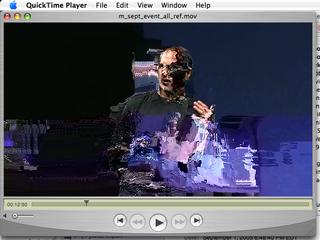I'm organizing a tiger team to explore what I think is a very timely, interesting, and important idea. Right now, the biggest challenge seems to relate to issues of authentication. Your insights would be most welcome.
"MobileMesh SafetyNet:An emergency mesh network for today's mobile phones"
The problem: the existing telephone infrastructure can go down when it is needed most.
The opportunity: cell phones are a huge resource. A user-friendly
widely-distributed pre-installed radio-enabled supercomputer is a
terrible thing to waste.
The proposed solution: The cellMesher would be a robust
self-configuring battery operated 'cell tower in a barrel' that coud
be dropped or floated into a disaster zone to replace the central
mobile phone infrastructure, allowing today's off-the-shelf mobile
phones to communicate with each other.
Basically, cellMeshers would spoof cell phones, convincing them that
they were normal cell towers. cellMeshers would exchange messages
with each other (or with satellites) to allow people to communicate
beyond their own local cellMesher, foregoing billing, authentication,
and other non-essential services in the service of emergency relief.
There is probably more aggregated computational and broadcast power in personal cellphones than in all the rest of the cell phone infrastructure.
A latent, distributed radio-enabled supercomputer is a terrible thing to waste.






